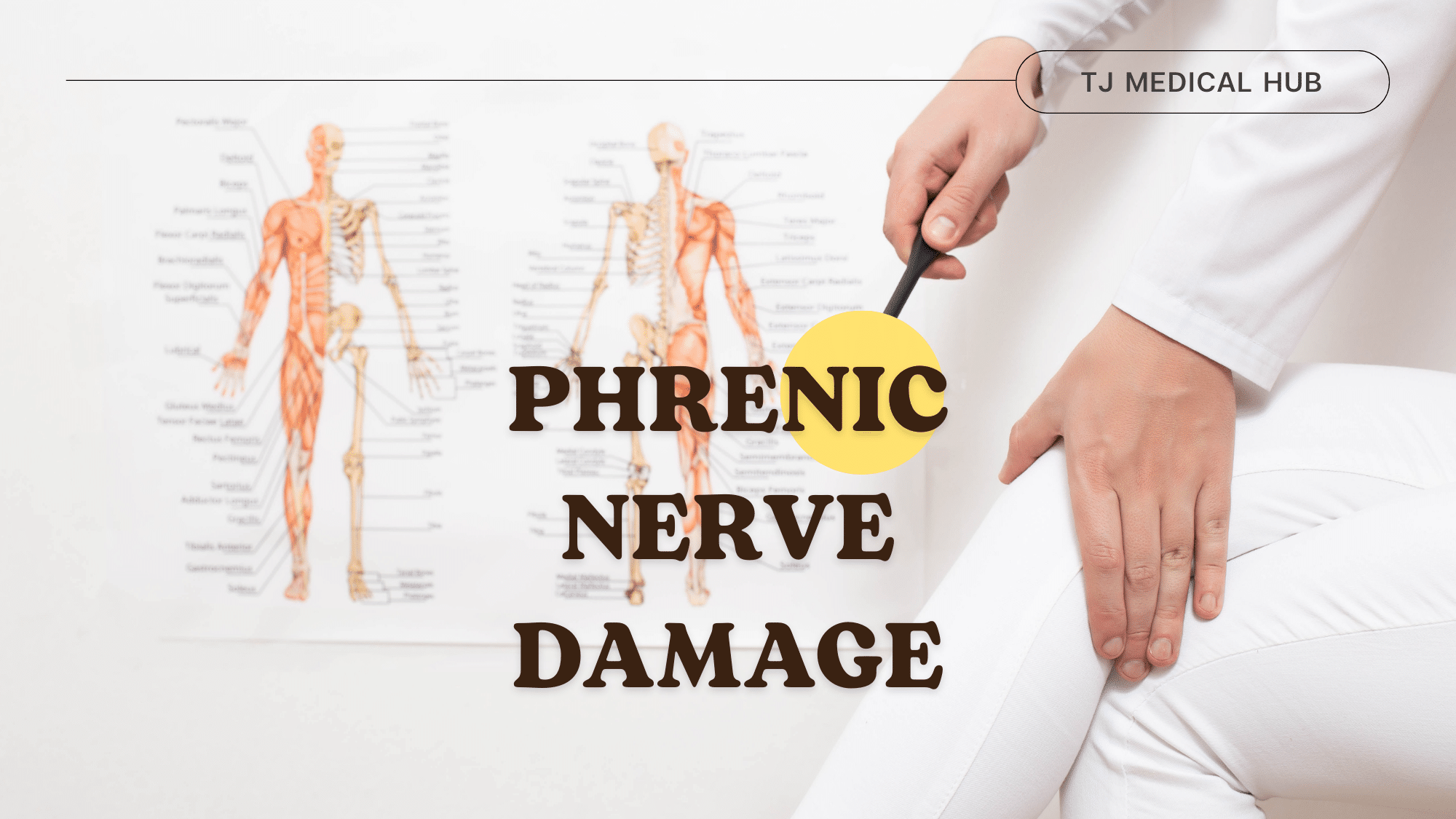Phrenic Nerves play a crucial role in the body’s function by transmitting impulses from the central nervous system (CNS) to coordinate muscle movements and sensory input. They regulate sensations, blood vessel expansion, sweat secretion, and hair growth in the autonomic nervous system. Nerve injuries can lead to issues like muscle paralysis, numbness, loss of sensation, dry skin, and hair loss. Severe pain may further impact patients’ ability to lead a normal life. Understanding and addressing nerve health is essential for overall well-being.
Phrenic Nerve Paralysis

Phrenic nerve paralysis is a medical condition that arises when the phrenic nerve, a crucial component of the peripheral nervous system, becomes impaired or damaged. This nerve plays a pivotal role in the respiratory system, controlling the movement of the diaphragm, which is essential for breathing. In this comprehensive overview, we will delve into the causes, symptoms, diagnosis, and management of phrenic nerve paralysis.
Phrenic nerve paralysis is a challenging medical condition that requires a comprehensive approach for effective management. Timely diagnosis, coupled with a targeted treatment plan addressing the underlying cause, can significantly improve the prognosis for individuals affected by this condition. Collaborative efforts between healthcare professionals, including neurologists, pulmonologists, and physical therapists, are crucial for optimizing patient outcomes and restoring respiratory function.
Causes of Phrenic Nerve Damage
The primary cause of phrenic nerve palsy typically involves compression or invasion of the nerve by a neoplasm. Other contributing factors encompass trauma (whether natural or surgical), phrenic “frostbite” following cardiac surgery, herpes zoster infection, and cervical spondylosis.
- Trauma and Injury:
- Blunt force trauma to the chest or neck region can lead to phrenic nerve damage.
- Surgical procedures involving the thoracic region may inadvertently affect the phrenic nerve.
- Neurological Disorders:
- Conditions such as amyotrophic lateral sclerosis (ALS) or Guillain-Barré syndrome can contribute to phrenic nerve dysfunction.
- Inflammation:
- Inflammatory processes, like infections or autoimmune disorders, may result in nerve inflammation and subsequent paralysis.
- Idiopathic Causes:
- In some cases, the exact cause of phrenic nerve paralysis remains unknown, leading to an idiopathic classification.
Characteristic Clinical Features
Individuals experiencing unilateral diaphragmatic paralysis often display no symptoms, and the anomaly is typically discovered incidentally during chest radiographs conducted for unrelated reasons. However, patients with pre-existing lung conditions may develop mild to moderate exertional dyspnea.
Symptoms of Phrenic Nerve damage
- Breathing Difficulties:
- Shortness of breath, especially during physical exertion.
- Shallow breathing due to limited diaphragmatic movement.
- Reduced Lung Capacity:
- Decreased ability to inhale deeply.
- Impaired cough reflex, leading to difficulty clearing the airways.
- Fatigue:
- Persistent fatigue due to the increased effort required for breathing.
- Chest Pain:
- Discomfort or pain in the chest may be present, especially if the underlying cause involves trauma.
Diagnosis
- Physical Examination:
- Assessment of respiratory patterns and chest movement.
- Examination for signs of trauma or injury.
- Imaging Studies:
- Chest X-rays and CT scans to visualize the anatomy of the chest and identify potential nerve compression or damage.
- Nerve Conduction Studies:
- Electromyography (EMG) to evaluate the electrical activity of the phrenic nerve.
- Laboratory Tests:
- Blood tests to identify underlying infections or autoimmune conditions.
Management of Phrenic Nerve Damage-Related Pain
- Pain Medications:
- Nonsteroidal anti-inflammatory drugs (NSAIDs) or analgesics may help alleviate pain associated with inflammation.
- Physical Therapy:
- Breathing exercises and diaphragmatic strengthening techniques can improve respiratory function and reduce pain.
- Nerve Blocks:
- Local anesthetic injections may provide temporary relief by blocking pain signals along the phrenic nerve pathways.
- Surgical Intervention:
- In severe cases, surgical procedures may be considered to repair nerve damage or relieve compression.
- Underlying Condition Treatment:
- Addressing the root cause of phrenic nerve damage, such as treating infections or managing autoimmune disorders, is essential for long-term pain management.
Phrenic nerve damage and the associated pain can significantly impact an individual’s quality of life. A multidisciplinary approach, involving pain management specialists, neurologists, and physical therapists, is crucial for developing effective treatment strategies. Early diagnosis and targeted interventions can play a pivotal role in alleviating pain, restoring respiratory function, and improving overall well-being for individuals affected by phrenic nerve damage.


